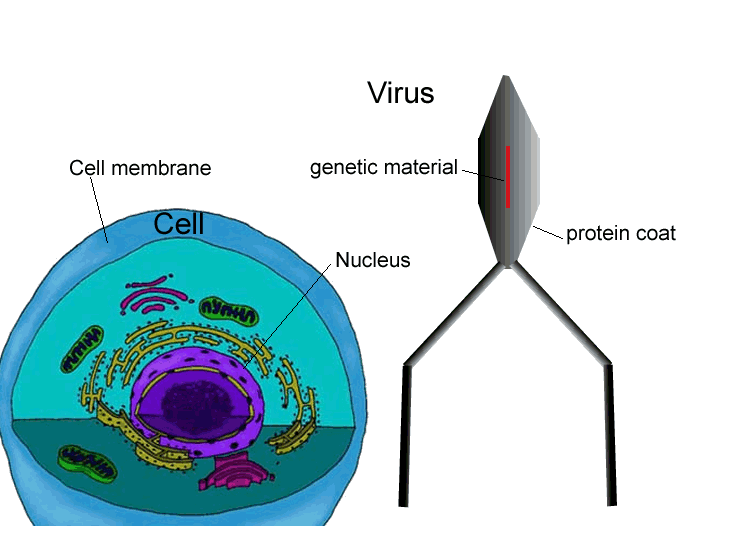Science of Conflict
How a virus works

Look at the video on the right of a flu virus..
How does a virus recognise its host cell?
Why does a flu virus only infect cells lining the nasal area?
The flu virus is a type of retrovirus. Retroviruses have only RNA. In order to infect the cell retroviruses, of which the HIV is one, needs to copy its RNA into DNA. They do this through a protein called reverse transcriptase. It is not clear in the video but the flu virus has its own reverse transcriptase that it also injects to do all the work. This is shown in the video. Why do you think the RNA needs to be changed into DNA?
Once the viral code is in DNA form it is ready to be translated into viral protein. This takes place outside the nucleus with the ribosomes, shown in blue in the video.
One virus can produce how many new viruses?
Why does the rapid multiplying virus not kill the infected person?
The simplest organism living on earth is the bacteria. However, an even smaller and simpler organism is the virus. It is difficult to categorise the virus as a living organism. The reasons are that:
- viruses can not replicate
on their own.
- they do not have the biological machinery to synthesise protein or produce energy.
The virus is considered as a non-living set of instructions. As an analogy to the virus, consider a computer program. Now the computer, which we consider to be the cell, is governed by its own program, similar to the DNA of a cell. As the new program, virus, is loaded onto the computer it takes over all commands and causes the computer to devote all its time copying the new program. If it wasn't for the computer hardware the virus program could not copy itself. Depending on the instructions the virus program carries, it can seriously disrupt the computer and even cause it to crash totally.
- smallpox;
- rubella;
- AIDS;
- rabies;
- polio;
- mumps;
- shingles;
- herpes simplex;
- chickenpox;
- German measles.
Not only do viruses cause human diseases but also infect many other organisms and severely disrupt agriculture and commerce. Some examples of these effects in modern times include the Mad-Cow disease and SARS.
Complexity of structure and function is beyond the scope of this unit.
Once infected the body must rely on its own immune system to defend itself. Antibiotics are useless against viruses.
Read the simple article on the immune system and answer the questions below.
An antigen is
Which of the following are responsible for removing bacteria and viruses from our body?
Phagocytes are
Two types of lympocytes are T and B, both of these lymphocytes produce
which inactivate invading bacteria or viruses.
Antibodies are shape-specific. That is an antibody will